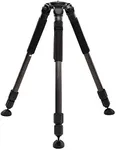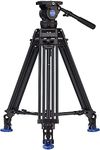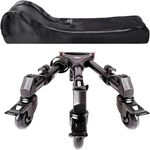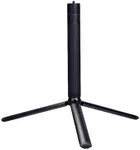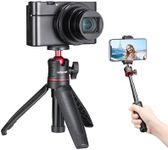Buying Guide for the Best Heavy Duty Tripods
Choosing the right heavy-duty tripod is essential for ensuring stability and support for your camera or equipment, especially in challenging environments or with heavy gear. A good tripod will provide a solid foundation, reduce camera shake, and allow for precise adjustments. When selecting a heavy-duty tripod, consider the following key specifications to find the best fit for your needs.Load CapacityLoad capacity refers to the maximum weight the tripod can support. This is crucial because using a tripod with insufficient load capacity can lead to instability and potential damage to your equipment. Tripods with higher load capacities (e.g., 20-30 lbs) are suitable for heavy cameras and lenses, while those with lower capacities (e.g., 10-15 lbs) are better for lighter setups. Choose a tripod with a load capacity that exceeds the total weight of your camera and accessories to ensure stability and safety.
MaterialTripods are typically made from aluminum, carbon fiber, or steel. Aluminum tripods are durable and affordable but can be heavy. Carbon fiber tripods are lighter and more resistant to vibrations, making them ideal for travel and outdoor use, but they are usually more expensive. Steel tripods offer maximum durability and stability, making them suitable for studio or industrial use, but they are the heaviest. Consider your need for portability versus stability when choosing the material.
HeightThe height of a tripod includes both its maximum and minimum heights. Maximum height is important for ensuring you can comfortably use your camera at eye level without bending over, while minimum height is useful for low-angle shots. Tripods with a wide range of height adjustments offer more versatility. If you often shoot standing up, ensure the maximum height is sufficient for your height. For macro or low-angle photography, check the minimum height capabilities.
Leg SectionsLeg sections refer to the number of segments each tripod leg has. More leg sections allow for greater compactness when folded but can compromise stability and take longer to set up. Tripods with fewer leg sections (e.g., 3-4) are generally more stable and quicker to deploy, making them suitable for heavy-duty use. If portability and compactness are important, consider a tripod with more leg sections (e.g., 5-6), but ensure it still meets your stability requirements.
Leg Lock TypeLeg locks secure the tripod legs at the desired length. There are two main types: twist locks and flip locks. Twist locks are generally more compact and can be adjusted quickly with a simple twist, making them ideal for travel. Flip locks are easier to operate with gloves and provide a more secure lock, which can be beneficial in heavy-duty applications. Choose the leg lock type based on your preference for ease of use and the environments in which you'll be shooting.
Head TypeThe tripod head is the component that holds your camera and allows for adjustments. Common types include ball heads, pan-tilt heads, and gimbal heads. Ball heads offer quick and flexible adjustments, making them suitable for general photography. Pan-tilt heads provide precise control over each axis, ideal for video work and landscape photography. Gimbal heads are designed for heavy telephoto lenses, providing smooth movement for wildlife and sports photography. Choose a head type that matches your shooting style and equipment.
Center ColumnThe center column is a vertical shaft that can be extended to increase the tripod's height. Some tripods have a removable or reversible center column for low-angle shots. While a center column can add versatility, it can also reduce stability when fully extended. For heavy-duty use, consider a tripod with a short or no center column to maximize stability. If you need the extra height occasionally, look for a tripod with a sturdy, adjustable center column.


